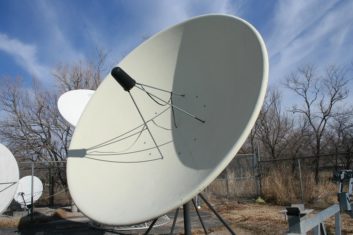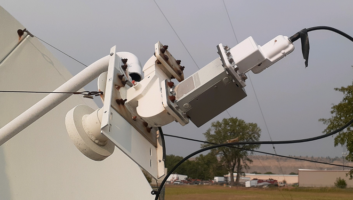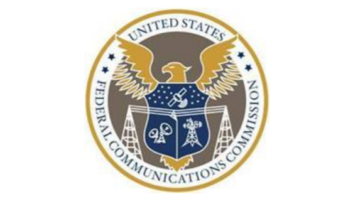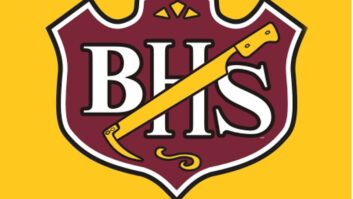 It’s a good thing that U.S. radio stations now have a couple of extra weeks to explore their reimbursement options for tweaking their satellite infrastructures. Those options are part of the C Band repack supporting national expansion of 5G, and there are plenty of questions flying around about it, which is natural because there are thousands of dollars involved.
It’s a good thing that U.S. radio stations now have a couple of extra weeks to explore their reimbursement options for tweaking their satellite infrastructures. Those options are part of the C Band repack supporting national expansion of 5G, and there are plenty of questions flying around about it, which is natural because there are thousands of dollars involved.
Radio World is featuring a series of Q&As with various participants around the industry. (Read recent background here).
We asked John Joslin, director of sales and marketing at satellite hardware supplier Dawnco, for his take on it.
Radio World: For the typical U.S. radio station, what is the lump sum amount that they’re being offered?
John Joslin: Most radio stations will get [approximately] $9,000 or $17,000 per registered satellite antenna.
Email a picture of the feedhorn on each dish to Dawnco, and we can identify which amount makes sense for each dish. You can make the determination yourself by looking up in the front of each dish, to see the feedhorn that the C Band LNB bolts onto. If the feedhorn has only one port with one CLNB bolted to it, your lump sum is $9K; when the feedhorn has two ports with two CLNBs bolted to it, your lump sum is $17K.
 Sometimes, the feedhorn has two ports with one CLNB bolted to it and a cover plate over the second port; this is a dual-polarization feedhorn and may qualify for the $17K lump sum.
Sometimes, the feedhorn has two ports with one CLNB bolted to it and a cover plate over the second port; this is a dual-polarization feedhorn and may qualify for the $17K lump sum.
RW: Do you think these amounts are fair, too much, too little? How does it compare to the hardware outlay for a typical station?
Joslin: The vast majority of dish-registered radio stations will have tons of money left over with the lump sum, if their existing dishes are good. And even if they buy a new dish they’ll have money left over after getting the lump sum. The 5G C Band repack will require most radio stations to install less than $2K of new filters and parts per dish, if the current satellite antennas are in good condition with plenty of signal quality margin.
If the old dish is not performing well now, you’ll probably need to buy a new 3.7 meter dish package for less than $5K. For a small number of radio stations with roof-mounted dishes that need to be replaced, the lump sum may cover most but not all expenses, due to the high cost of roof-mounting structures.
RW: Do you think most stations will choose the lump option?

Joslin: When they know all the facts, nearly all radio station decision-makers will choose the lump sum payment, which gives them surplus money after buying all needed filters and parts. The only other option is to have the big satellite owners (SES and bankrupt Intelsat) provide filters and gear to them, which leaves no opportunity for surplus money for the radio station.
The $17K lump sum even makes sense for the few stations that need expensive roof structures to hold new dishes on the roof.
Some stations may miss the lump sum opportunity because their dishes were not previously registered, or they missed the lump sum filing deadline [now Sept. 14], or they weren’t given enough time to learn all of the facts.
RW: What happens next if a qualified station chooses the lump sum option?
Joslin: Radio stations must act quickly to decide they want the lump sum, then immediately make their lump sum filing with the FCC before the Sept. 14 deadline.
Call Dawnco or email us a picture of the dish-feedhorn, and we can help determine if the dish qualifies for $9K or $17K lump sum. We put all stations in touch with a respected Washington, D.C. area firm, who has the experience and connections to handle the lump sum filing, priced at $1,250 plus $75 per dish. Our recommended firm is very familiar with this FCC filing process. They are very likely to get stations the amount they are entitled to.
If you file yourself and make an error, you may not get what you need.
RW: What happens next if a qualified station does not opt for the lump sum option?
Joslin: When a station doesn’t take the lump sum or misses the filing deadline, their only other option is to have the big satellite owners (again, SES and Intelsat) provide filters and gear to them.
They will need to log onto the website for the big company that owns the satellite they are receiving signals from (usually SES for radio), navigate to the 5G C Band repack page, and enter a request for filters and equipment. There will be procedures to follow, questions to answer, and a wait time for obtaining answers.
At some point the big satellite company will ship the needed filters and gear, for the station to install themselves. Upon request, the big satellite company can schedule a roving crew to pass by the station for a quick installation of the filters.
RW: What option if any is available to stations that did NOT register their earth stations in the earlier window for that?
Joslin: The FCC documentation makes clear that the lump sum is not available to sites that did not previously register their satellite antennas with the FCC.
Unregistered sites can make a request for free filters to the big satellite company that they are receiving signals from (usually SES for radio). It is not clear if the big satellite company will provide filters or other gear to unregistered sites (time will tell).
Hundreds of radio stations did not register any of their dishes, or improperly registered for only some of the dishes they own. [Related: “SBE Issues Reminder for C Band Dish Users“]
Many unregistered sites are only finding out now that they made a big error, which may cost them thousands of dollars for new equipment needed to cope with the mandated 5G C Band repack. [Related: “C Band Repack Could Be Costly for Many Radio Stations“]
Many stations have expressed how they didn’t know they had to register, or didn’t realize that not registering would expose them to big costs. I guess the unregistered sites can talk to their congressmen to try for some political pressure on the FCC to extend the registration date.
RW: What support if any are the satellite operators, radio syndicators like Westwood One or networks like NPRSS providing to these stations?
Joslin: We speak to many radio station owners and engineers each day. At this point in mid-August, many individual stations are just now hearing about the 5G C Band transition, and realizing that it will affect them. The vast majority of radio stations do not realize that 60% of C Band for satellite will be removed within three years, or that filters will need to be installed in front of every single C Band LNB.
Management at the big station groups are aware of the 5G C band transition, but some are not aware of all of the details of Lump Sum compared to getting filters from the satellite operators.
RW: What recommendations are you making to radio stations about this decision?
Joslin: File for the lump sum if it is available to you. Don’t choose the option of using the big satellite companies, unless it is your only option.
RW: You mentioned confusion in the marketplace.
Joslin: Here is an interesting conversation I just had with a radio station that addresses one of the questions you asked me earlier. We presented our customer with an explanation of the lump sum opportunity. He had recently called to Westwood One, asking what he should do, regarding the 5G C Band repack. They told him to do nothing. We told him that because he had already registered his two satellite dishes, he was qualified for a $26K lump sum payment for his radio station ($9K + $17K).
Both of his dishes are in great shape, so his only cost for his rural site is $1,600 for two filters. He walks away with a surplus of $24K that he can put in his pocket. If he had taken the advice of the Westwood One representative, he would have been entitled to two free filters but zero surplus money. There seems to be some misinformation out there.
[A Westwood One official told Radio World on background that the syndicator is “not advising people/stations on what they should do on the lump sum decision. That’s their own decision to make.” Radio World shortly will publish a Q&A with Westwood One’s Eric Wiler about the company’s perspectives on the reimbursement program.]
RW: What else should we know?
I just saw a Radio World article stating that stations have the ability to get reimbursement from the FCC Clearinghouse using the cost catalog, which is not exactly true. Stations can ask the big satellite companies to provide needed filters and equipment.
SES or bankrupt Intelsat can file with the FCC Clearinghouse using the cost catalog, to obtain reimbursement for the cost of equipment they give to the stations. For example, SES and Intelsat will be reimbursed up to $900 for each C Band bandpass filter they provide to stations.
By the way, think what would be possible if that $8 billion bonus money to the big satellite operators, was instead equally divided by the 15,000 satellite antennas in the USA. It would be $533K for every dish!
[Related: “Lump Sum Option May Not Be Best for All”]












